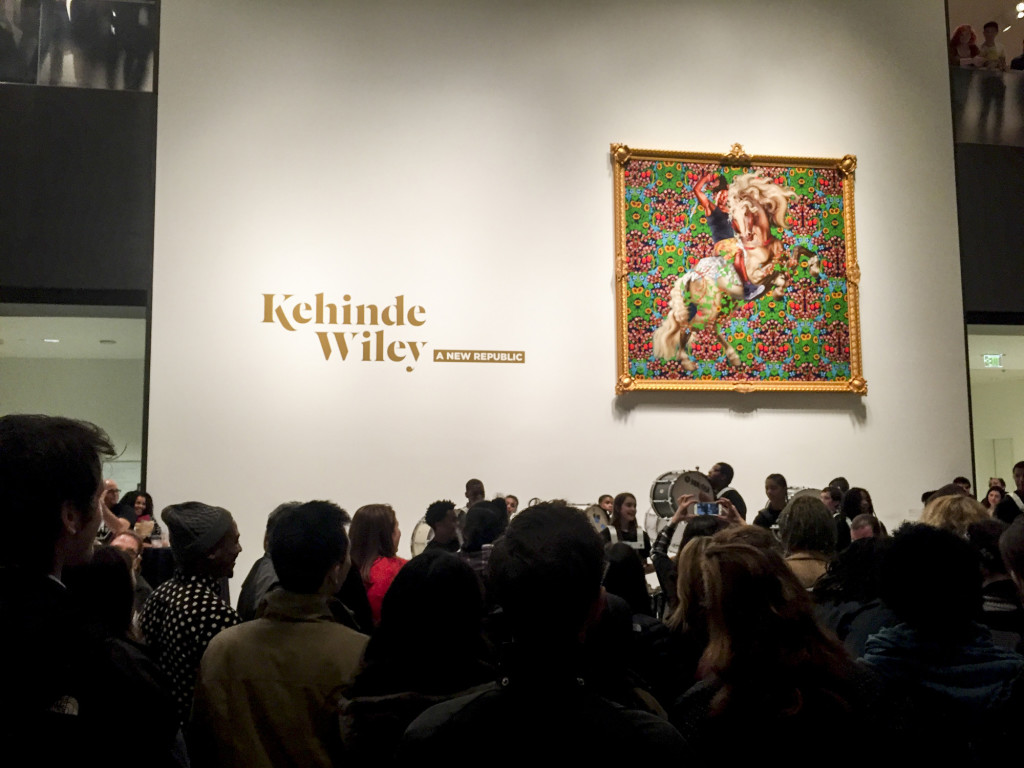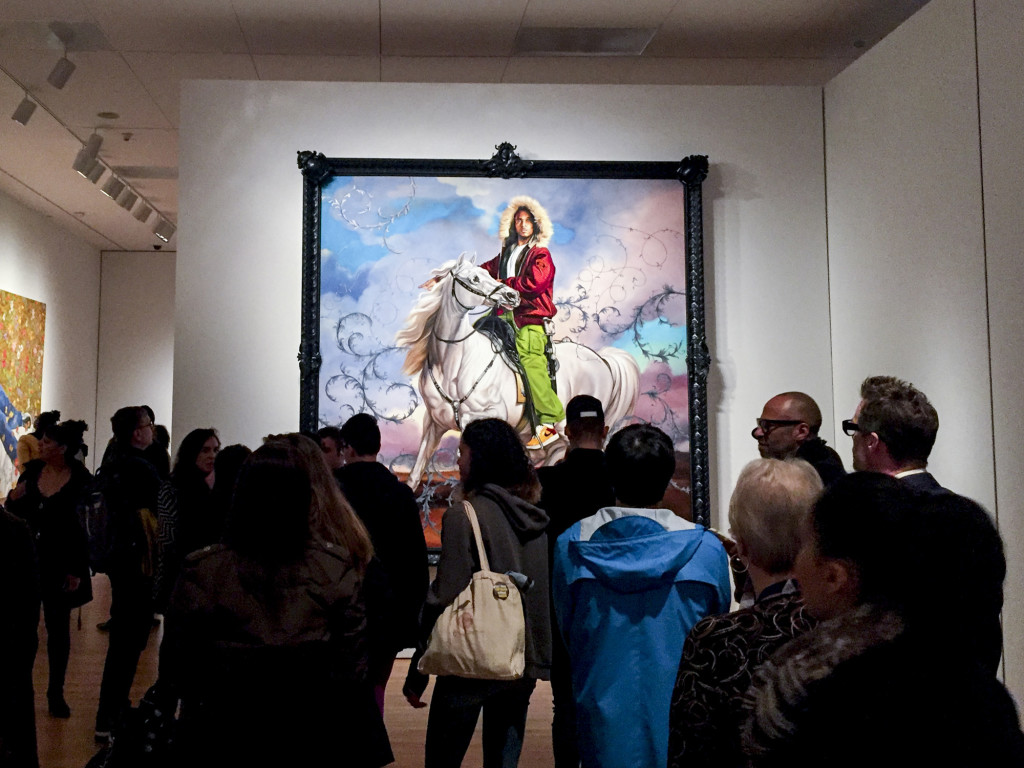Using bright colors and intricate designs, Kehinde Wiley challenges white supremacy, calls out race as a social construct and honors ordinary black people through his artwork. His exhibit “A New Republic” opened at the Seattle Art Museum on Feb. 11 and will be showing through May 8.

Crowds gather at the exhibition opening to hear Garfield High School’s Marching Band Drumline perform.
As someone who studied art at the San Francisco Art Institute and Yale University, Wiley is familiar with the conventions of Western European Art and he has made it his mission to both challenge these conventions and explore them more deeply. All of Wiley’s works involve portraits of some kind, in which he replaces the traditional white subject with a person of color, most often a black man. By inserting a black person into a setting that was originally created to glorify some European aristocrat, religious figure, or person of power, Wiley directly challenges the associations between race and class so often made in society and art.
“It’s about the language of celebrity that almost feels wasteful or decadent, to put all of these energies, all of this time and human effort into people that no one has heard of,” Wiley said on the opening night of his exhibit. “The point is that it’s not wasteful.”
The SAM Modern and Contemporary Art Curator, Catharina Manchanda, worked with Wiley to bring his artwork to Seattle. She said that his work is becoming increasingly important in light of efforts in the U.S. to confront racism, like the Black Lives Matter movement.
“I think the entire country is dealing with such a soul-searching mission,” Manchanda said. “His work in particular seems to have ever greater significance and meaning in that context.”

Crowds gather at the exhibition opening to hear Garfield High School’s Marching Band Drumline perform.
Going into the exhibit, I knew the artwork would be political, but it had a greater impact than I expected. In many ways the paintings are whimsical, due to Wiley’s liberal use of vibrant colors, and the contrast between many of his subjects’ every-day clothes and their formal poses. But it was undeniably unusual to see black people at the center of the paintings, in a position of power and honor. Wiley’s political and social critique lies hidden beneath the whimsy of his work and therein lies its power—the beauty and layers of historical context make his work youthful and therefore his message is appealing to a wide audience and reflective of contemporary concerns.
At the opening night, Wiley explained that he wants to do more than confront colonialism and racism in this relatively obvious way. He wants his work to be complex, just like the people he paints.
“When you walk into a room and see these decorative paintings of black and brown people, it’s very easy to think you get it—and then you look further and closer and there are increasing levels of difficulty that slowly open themselves up,” Wiley said. “I think that’s one of the reasons the work can be enjoyed by the sort of ivory tower system of art world goers, as well as the consuming public who’s out on Instagram.”
The complexity comes from the stories behind each painting. In the first series, Wiley found random men walking around in Harlem, Brooklyn and Queens and invited them into his studio. He let them pick their attire, but he chose the pose—usually modeled after a specific European portrait. In his paintings he captures the vulnerability, sensuality and beauty of these men, which speaks to the complexity of the individuals themselves and reveals what the original, often stoic, European paintings were missing.
In the “Religious Series,” Wiley inserts black men into iconic paintings of specific saints and even into stained-glass windows. The latter are especially powerful pieces, as the religious context of stained glass, most often found in churches, is unavoidable. The style conjures feelings of sanctity and glory; again instead of the usual white figures clothed in fine robes, Wiley’s stained-glass places black men dressed in everyday clothing like jeans and puffy vests in the seat of honor.
In his most recent work, Wiley focused for the first time on women. He explained that he conducted these paintings differently, working with a fashion designer to create elaborate gowns and even more elaborate hairdos for his models, rather than allowing them to choose their outfit.
“I wanted to create something that was graceful and not overtly sexualized, but I also was relying on some of the conventions surrounding beauty,” Wiley said. “I wanted to create beauty that becomes so heavy under its own weight that it begins to fall and becomes like the grotesque—to point out the ridiculousness of the construction of beauty.”
While the paintings are just as impressive as the rest and fully capture the beauty of his models, I found myself wishing that they were wearing their own clothes, like the men did in their portraits. Wearing gowns accentuated with chain and leather belts, these women appeared to be symbols or tools used to make a point, rather than complex individuals.
Nevertheless, the exhibit as a whole is thought-provoking, inspiring, and an example of truly beautiful craftsmanship.
Madeline may be reached at mcorbin@su-spectator.com








